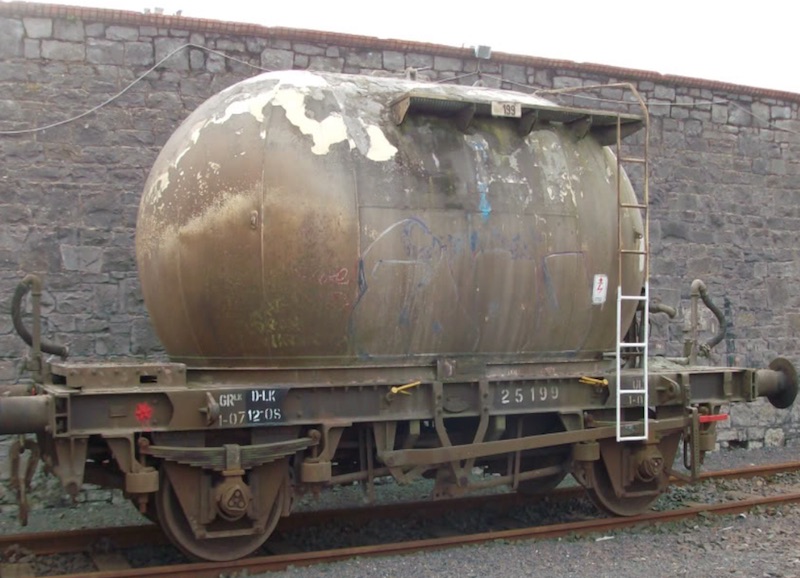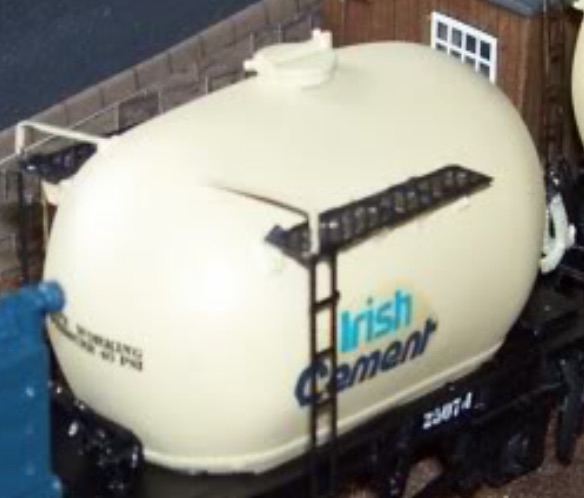-
Posts
7,478 -
Joined
-
Last visited
-
Days Won
149
Content Type
Profiles
Forums
Events
Gallery
Everything posted by Noel
-
+1 That's talent
-

Photographic Website Updates
Noel replied to thewanderer's topic in Photos & Videos of the Prototype
Fabulous pics of the Clare coast. The skipper of Shannon Breeze has a barge up river on the inland Shannon. Nice guy, some years ago he actually stopped the ferry mid channel at tarbert race for us when the ebb spring tide was running at 7kts and we were pushing hard against it coming upstream at the race. A helpful call over the VHF "Gentlemen take your time, the lane is yours, don't worry about the two Ferries, we will steer around you". Photo 194 of 'The Bridges of Ross' in profile is absolutely stunning in that light. Loop head lighthouse is always a welcome sight when making for the Shannon Estuary after some Atlantic rock'n'roll. Love the shot 203 north from the top of the tower. Its an amazing part of the world, and yet I know Irish folk who've been to exotic places all over the world like Fiji, Kenya, the Galapagos island, Yellowstone, New Zealand, but have never been to native beauty spots like the cliffs of Moher, the Skelligs, parts of Mayo, nor even parts of Kerry. Thanks for the pics. PS: Please don't shoot me Richie, but photo 209 in Limerick shows cement bubbles in the distant siding that still look very white/ivory in colour despite the dirt. -

IRM Cement Bubble Poll - Mercig Factory Weathering or Pristine Finish?
Noel replied to Warbonnet's topic in Irish Models
On a serious note what was the chronological timescale and order of the three liveries (ivory/white, orange, grey) used on the two axle cement bubble wagons? -

IRM Cement Bubble Poll - Mercig Factory Weathering or Pristine Finish?
Noel replied to Warbonnet's topic in Irish Models
ROFLMAO Arrrgh - Does my face look weathered enough in this foto? (in jest) -
Kieran, its one of those superb layouts when your not entirely sure if your looking at a photograph of the real world or a photo of a layout. Superb vegetation and back scenes too.
-

Photographic Website Updates
Noel replied to thewanderer's topic in Photos & Videos of the Prototype
That's a very fair point. Is location a factor (i.e. not being near a large population centre, motorway, etc). -

Photographic Website Updates
Noel replied to thewanderer's topic in Photos & Videos of the Prototype
+1 It is sad we don't seem to have operational 'preserved' lines in ROI, where this stuff could be viable to preserve properly and run due to visitor traffic. Also in ROI we have a poor history of local authority support of such projects unlike NI where LA grants and support is part of the scene. With all the line closures in the 60s and disused track beds still owned by CIE, surely there is somewhere closer to population centres or existing main lines where 'preserved' stock could one day run again. I can't see anything on outdoor static display surviving long term. At least this stuff while rotting has escaped the torch so far - but what future? If the 'Ballybrophy/Limerick' lines closes in the future it might be a candidate for partial preservation either at the Ballybrophy end (i.e. visitors via mainline rail), or the Limerick end (footfall from Limerick city and visitors by rail). BTW, I hope that line does not close, but if it does get axed it would seem a crying shame to lift all the track. Is there any sections on the old disused Mullingar/Athlone line that would suit an operational preserved line (i.e. not covered by the new cycle way). -
Hi John Thanks, you could count me in for two if it is this van below (posted by Richie back in 2014). I love the shape and the smooth curved arc of the tumbledown. I travelled on trains with these in the 60s. I presume these pre-dated the Dutch vans by a decade. Noel All photos from Richie's post in 2014 - http://irishrailwaymodeller.com/showthread.php/3553-Generator-cars-for-irish-coaching-stock-specifically-HLV?p=55502&viewfull=1#post55502
-
I was happy enough with this RTR one from SF. Now what I would really like are a few of the earlier heating and luggage vans with the nice shaped tumbledown.
-
Hi John. Any plans to do another run of these 4 wheel or 6 wheel heating vans RTR in the future? Noel
-
Saw this in the flesh today and it is even more amazing in reality than the photos convey. Eoin congrats on a superb piece of engineering. Your talent surpasses a master watch maker.
-

IRM Cement Bubble Poll - Mercig Factory Weathering or Pristine Finish?
Noel replied to Warbonnet's topic in Irish Models
Ok - hands up. I have a confession to make. Today I bought a 'weathered' orange cement bubble wagon. And I have to admit it looks quite well in that livery with the moderate weathering. Confession no 2, its hitched to a factory weathered 183 and in the background is a factory weathered Dutch GSV. Mr Pristine is now in hiding!!! But honest most my other stock is . . . Assuming IRMs look as well if not even better than this you can count me in for 4 packs. -
Hopefully will get to see it in Bray later
-
Eoin, you are a master model engineer.
-

IRM Cement Bubble Poll - Mercig Factory Weathering or Pristine Finish?
Noel replied to Warbonnet's topic in Irish Models
Richie, I am not the only one. All I was pointing out was that I was on the same wave length as Dave's customer. I accept probably more people like weathering than not. -
What a superb conversion of a lima class 33. Coming on really well. Really looks like a C class.
-

IRM Cement Bubble Poll - Mercig Factory Weathering or Pristine Finish?
Noel replied to Warbonnet's topic in Irish Models
Refraining from responding with ribaldry on this one...must.be.nice. I totally understand where Dave's customer is coming from, and I would be on much the same wave length. I only have two factory weathered locos and I won't be weathering any rolling stock on our layout. Toy trains for many are a form of escapism into a world of 'pretend' not reality. The real world is dirty enough. -

IRM Cement Bubble Poll - Mercig Factory Weathering or Pristine Finish?
Noel replied to Warbonnet's topic in Irish Models
Thanks Patrick -

IRM Cement Bubble Poll - Mercig Factory Weathering or Pristine Finish?
Noel replied to Warbonnet's topic in Irish Models
Ok two weathered examples to compare. Gentle to moderate weathering but there is no sign of the attractive two tone blue Irish Cement lettering, I assume because it wasn't used on what is probably the grey livery. Just looks a little plain without some logo visible. IMHO - maybe reality but ugly is not harsh enough to describe how awful this looks and nothing looking that dirty is ever going to run on our layout Anyway isn't a great complaint to have - another wonderful fine scale Irish model about to hit the shelves and we are all worried about dirt! PS: Presume the chassis will need the same gull neck coupling fix for the NEM socket. -

IRM Cement Bubble Poll - Mercig Factory Weathering or Pristine Finish?
Noel replied to Warbonnet's topic in Irish Models
Sure, I do know what they looked like in their final years. I just won't put anything that dirty or ugly looking on our layout. Its just a "toy train" layout after all and I like a bit of colour. I appreciate thats just me and understand others may prefer otherwise. If they are mildly weathered or pristine I'll buy a rake, but if they look like "final years" I would regrettably pass. But I don't think it will be a problem if IRM produce some packs that are weathered, and other packs that are pristine. Win-Win everybody happy. PS: This may be modelling heresy but personally I never liked 'some' of the excessively heavily weathered MM locos posted here that were absolutely filthy all over. -

IRM Cement Bubble Poll - Mercig Factory Weathering or Pristine Finish?
Noel replied to Warbonnet's topic in Irish Models
Yes I've seen that before. Superb, and that kind of mild weathering really appeals to me but not the manky filthy weathering which often seems ott. -

IRM Cement Bubble Poll - Mercig Factory Weathering or Pristine Finish?
Noel replied to Warbonnet's topic in Irish Models
Thanks Fran. Sound exciting. Can you please confirm my question yesterday that the livery is not dissimilar to the photo I linked to yesterday with the two shades of blue Irish Cement wording? Noel -

IRM Cement Bubble Poll - Mercig Factory Weathering or Pristine Finish?
Noel replied to Warbonnet's topic in Irish Models
I totally understand that prototypically, but if some were sold 'pristine' at least modellers could choose to weather themselves at whatever level they preferred. Most unweathered models look toy like (e.g. MM0171, MM5229, etc). Even if lightly weathered, modellers could add additional 'filth' if desired. As the survey asked, perhaps the solution might be to produce half heavily weathered, and the other half either pristine or lightly dusted. -
Hi IT. I have downloaded the LokProgrammer and the template library. I finally figured out how to play the sound while simulating driving the loco using throttle input slider, but I cannot find a way of pressing function buttons to test the sounds of functions while the prime mover is playing. It appears a very complex process mixing a sound project. I will start reading the manual over the weekend and hopefully will then decide if LokProgammer is for me or not. If I can get one of the new 'Full Throttle' sound project off the ESU USA loco library for EMD567 but add Irish horn, station whistle and station announcement from the old ESU 071 sound project, I might be able to brew a half decent 141/181 project that supports 'Full Throttle' driving, and in time make an 071 FT project as well. Today I installed my first LegomanBiffo 141 sound decoder (LokSound) and I have to say the sound is fantastic, better than any other 141/181 I have heard so far. The drive being a LokSound V4 however is a little direct and rather responsive, but sounds great. However it has one really daft feature, which initially I though was rather clever, that is when you change direction, believe it or not it actually plays the sound of the driver opening the cab door, leaving the cab, shutting the door, walking down the footway with foot steps, opening the door to the other cab, getting in and closing the door behind him. Yea, kind of clever you might think, but while this lengthy sound sequence is playing you have no throttle control, so you can't shunt this loco. In real life the driver would not change cabs when shunting in a yard. If this sound was available with 'Full Throttle' drive features we might have the best of all worlds.
-

IRM Cement Bubble Poll - Mercig Factory Weathering or Pristine Finish?
Noel replied to Warbonnet's topic in Irish Models
Hi Guys Is this similar to colour and livery that is planned for the first run (i.e. white/ivory with blue 'Irish Cement' logo? If yes I'd love to buy 12 of them either pristine or lightly factory weathered (e.g. similar level of light dusting done on MM factory weathered locos). Photo David Orr's photobucket Unfortunately I would have no interest in buying heavily weathered ones like the photo below. Photo Noel Enright's photobucket PS: Great work guys
.png.c363cdf5c3fb7955cd92a55eb6dbbae0.png)


